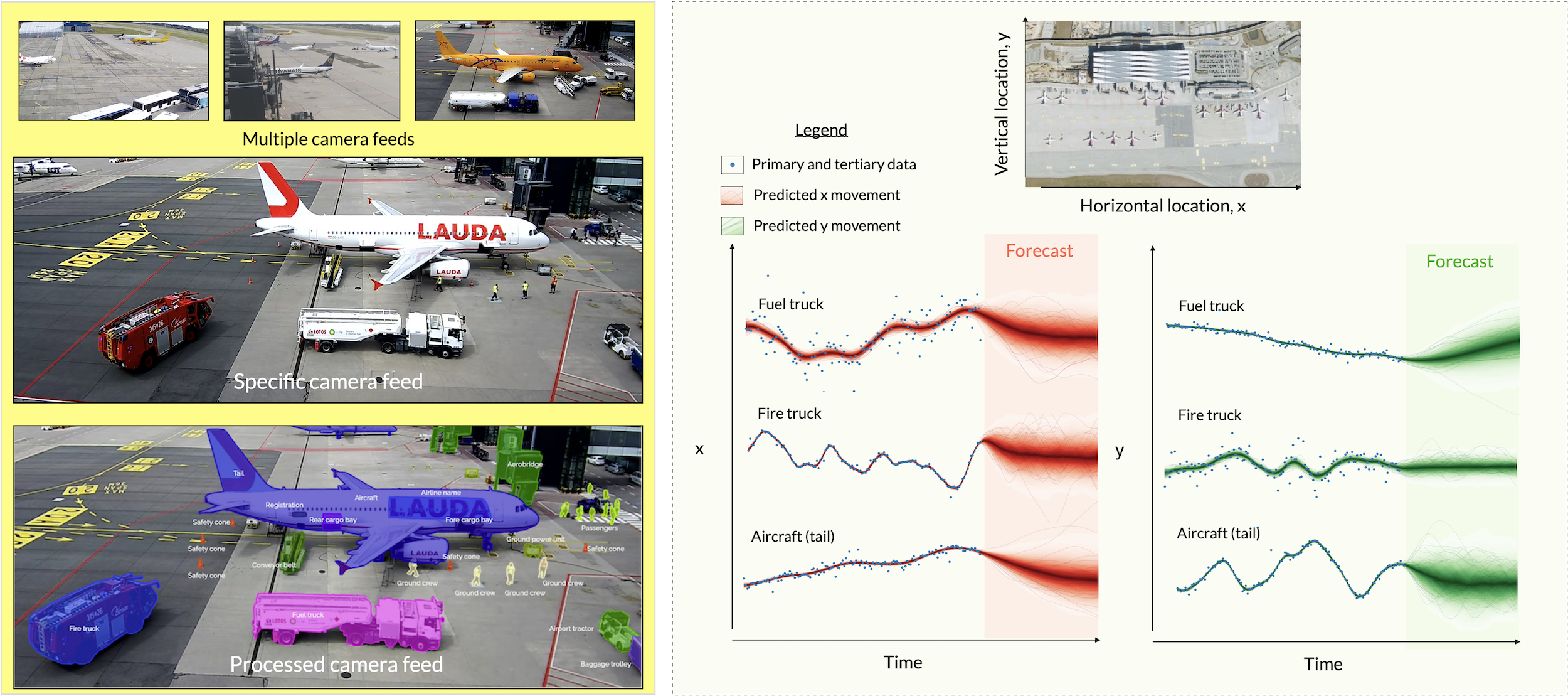Sustainable Aviation Research
Overview

Grand challenges
- Identify operational and policy-level decisions to decarbonize aviation within the next 3-5 years.
- Develop calculators for more precisely predicting airline and airport emissions and their breakdown.
Project Airport
In an airport, in regions under active control, there are localization technologies (ADS-B, MLAT, and ground radar) that can be better calibrated with actual movements. Near the terminals there are more vehicles which are typically not under active control. This project aims to synthesize CCTV and ADS-B to better triangulate moving assets (e.g., aircrafts, fuel tankers, convey belts, ramp agents) and to predict their future positions, based on past localizations. This offer ways to more accurately track apron vehicle emissions, predict airport energy requirements, check violations of safety regulations, and even evaluate new policy scenarios. The advantage of such problems is there is no lack of past data; the only difficulty is in identifying how best to synthesize troves of data.

Precise Carbon Calculators
Existing carbon emission calculators (e.g., ICAO) in aviation are often too optimistic: they use great circle distances and new engine emission indices. Additionally, they do not typically factor the impact of contrails, nor do they acknowledge the emissions associated with the airport and ground vehicles. This project seeks to identify innovative ways to calculate carbon emissions from heterogeneous sensor data.